
The Sagrada Familia, an iconic basilica designed by Antoni Gaudí, is a masterpiece that beautifully blends art, architecture, and spirituality. Visitors from around the world flock to this unique landmark, drawn by its intricate facades and stunning interior, making it a true symbol of Barcelona's cultural heritage.
Recognized as a UNESCO World Heritage Site, the Sagrada Familia is more than just a church; it's an experience that captivates the imagination. With its breathtaking towers and vibrant stained glass, **Sagrada Familia: A Must-Visit Landmark in Barcelona** promises to leave a lasting impression on anyone fortunate enough to explore its sacred halls.
The Architectural Marvel of Sagrada Familia: Gaudí's Vision
The Sagrada Familia stands as a **testament** to Antoni Gaudí's innovative architectural vision, merging natural forms with religious symbolism. Its design reflects Gaudí's deep fascination with nature, evident in the organic shapes and intricate details that adorn every corner. The basilica's striking towers, inspired by the peaks of Catalonia, are a hallmark of Gaudí's style, each representing different biblical figures, which narrates a story of faith and devotion.
Gaudí employed a unique approach to structural engineering, utilizing techniques that were ahead of his time. The basilica features a **hyperboloid structure**, which allows for natural light to flood the interior, creating a dynamic interplay of light and shadow. This innovative use of geometry not only enhances the building's aesthetic appeal but also ensures its stability and longevity, demonstrating Gaudí's mastery of both form and function.
Visitors to the Sagrada Familia can explore various elements of Gaudí's genius through its detailed façades. Each façade tells a story of the life of Christ, illustrated through sculptures and carvings that convey profound theological messages. Highlights include:
- The Nativity Facade: Celebrates the birth of Jesus with intricate depictions of flora and fauna.
- The Passion Facade: Portrays the suffering and crucifixion of Christ with stark, angular forms.
- The Glory Facade: Represents the resurrection and glory, still under construction, promising to be the most monumental.
In essence, the Sagrada Familia is not only an architectural marvel but also an evolving canvas of Gaudí's **spiritual vision**. As construction continues, this landmark remains a symbol of creativity and devotion, inviting generations to witness its beauty and significance in the heart of Barcelona.
A Historical Overview of Sagrada Familia in Barcelona
The history of the Sagrada Familia is as captivating as its architectural design. Construction began in **1882**, under the initial direction of architect Francisco de Paula del Villar. However, the project took a transformative turn when **Antoni Gaudí** took over in **1883**, infusing it with his unique artistic vision. This marked the beginning of a long journey, with Gaudí dedicating over 40 years of his life to the basilica, ultimately becoming a defining part of his legacy.
Despite Gaudí's untimely death in **1926**, the Sagrada Familia's construction has continued, driven by a team of architects committed to realizing his vision. The basilica has experienced various phases of construction, influenced by both technological advancements and the historical context of **Barcelona**. Notably, the **completion of the Nativity Facade** in **1935** showcased Gaudí's genius, yet the work remains ongoing, highlighting the blend of tradition and innovation in its architectural evolution.
Over the years, the Sagrada Familia has faced numerous challenges, including interruptions caused by the Spanish Civil War and the COVID-19 pandemic. Nevertheless, its status as a **UNESCO World Heritage Site** has helped garner international support and funding to ensure that Gaudí’s vision is brought to fruition. Current estimates suggest that the basilica will be completed by **2026**, coinciding with the centenary of Gaudí's death, a fitting tribute to his monumental contribution to architecture.
Today, the Sagrada Familia stands not only as a religious landmark but also as a **cultural icon** of Barcelona. It draws millions of visitors each year, eager to experience its beauty and complexity. As work continues, the basilica symbolizes the city’s resilience and creativity, inviting future generations to appreciate its rich history and the artistic legacy of **Antoni Gaudí**.
Why Sagrada Familia is a Must-Visit Landmark
The Sagrada Familia is a must-visit landmark not just for its breathtaking beauty, but also for its deep cultural significance. As a monumental piece of architecture, it embodies the innovative spirit of Antoni Gaudí, whose vision transformed a simple church into an iconic symbol of Barcelona. The basilica stands as a bridge between the past and the future, inviting visitors to explore its evolving story and ongoing construction.
One of the standout features of the Sagrada Familia is its remarkable integration of nature into architecture. Visitors can appreciate:
- Nature-Inspired Designs: Gaudí's use of organic shapes reflects his admiration for the natural world.
- Colorful Stained Glass: The vibrant windows fill the interior with a kaleidoscope of light, enhancing the spiritual atmosphere.
- Symbolic Details: Each element, from the towers to the sculptures, carries a profound religious significance that tells a story.
Moreover, the Sagrada Familia offers visitors a unique opportunity to witness the craftsmanship and dedication behind its construction. Guided tours provide insights into:
- The ongoing efforts to complete the basilica, projected for 2026, marking the centenary of Gaudí's death.
- The historical challenges faced during its construction, including the impact of wars and pandemics.
- The innovative techniques used in its design that continue to inspire architects around the world.
In conclusion, the Sagrada Familia is not merely an architectural feat; it serves as a testament to creativity, faith, and perseverance. As visitors stroll through its grand halls, they become part of a living legacy, experiencing firsthand the beauty and significance of this iconic landmark in Barcelona.
Exploring the Unique Features of Sagrada Familia
Exploring the Sagrada Familia reveals a stunning interplay between art and architecture, making it a truly unique landmark in Barcelona. One of the most striking features is the basilica's use of light. Gaudí ingeniously designed the interior to capture natural sunlight, creating a mesmerizing atmosphere that shifts throughout the day. The interplay of light and shadow not only highlights the intricate details of the structure, but also enhances the spiritual experience of visitors, guiding them through the sacred space.
Another remarkable aspect of the Sagrada Familia is its symbolic representations embedded within the architecture. Each façade and element serves a purpose, conveying a deeper spiritual message. The vibrant stained glass windows, for example, are not just decorative; they tell stories from the Bible, illuminating the interior with colors that transform as the sun moves. This thoughtful integration of religious themes invites visitors to reflect on their own beliefs and connections to the divine.
Furthermore, Gaudí's commitment to nature is evident in the organic forms utilized throughout the basilica. Inspired by the shapes and structures found in the natural world, the design mimics the flow of trees and the intricate patterns of plants. Even the columns inside resemble tree trunks, branching out to support the ceiling. This approach not only enhances the aesthetic appeal of the Sagrada Familia but also fosters a sense of harmony between human creation and the natural environment.
Finally, the ongoing construction of the Sagrada Familia adds a dynamic layer to its uniqueness. Each visit offers a glimpse into the latest advancements and techniques being employed to bring Gaudí’s vision to life. As it approaches completion, projected for 2026, the basilica continues to evolve, captivating new generations of visitors and solidifying its place as a must-visit landmark in Barcelona.
Tips for Visiting Sagrada Familia: What to Know Before You Go
Before visiting the Sagrada Familia, it's essential to plan your trip wisely. **Booking tickets in advance** is highly recommended, as this iconic landmark attracts millions of visitors each year. Opt for a timed entry ticket to avoid long queues and ensure you have ample time to explore its breathtaking interiors. Consider visiting during off-peak hours, such as early morning or late afternoon, to enjoy a more serene experience.
Another helpful tip is to download a **mobile app** or audio guide that provides in-depth information about the basilica's history and architectural features. These resources enhance your visit, allowing you to appreciate the intricate details and stories behind Gaudí's masterpiece. Furthermore, wearing comfortable shoes is advisable, as you’ll be doing a fair amount of walking throughout the vast space and its surrounding areas.
Don’t forget to check the weather forecast before your visit. The Sagrada Familia’s exterior is equally stunning as its interior, so a bright sunny day will allow you to fully appreciate its facades and intricate carvings. If possible, plan your visit to coincide with a religious service to witness the basilica's spiritual ambiance, which adds another layer to the overall experience.
Lastly, take a moment to explore the **surrounding areas** of the Sagrada Familia. The nearby parks and streets offer charming cafes and shops, perfect for a leisurely stroll after your visit. Some of the notable attractions within walking distance include the Hospital de Sant Pau and the beautiful Plaça de Gaudí, which provides stunning views of the basilica from different angles.
Sagrada Familia: A Symbol of Barcelona's Cultural Heritage
The Sagrada Familia stands as a pivotal emblem of Barcelona's cultural heritage, reflecting the city's rich artistic traditions and its deep-rooted spirituality. As one of the most visited landmarks in the world, it encapsulates the essence of Catalan Modernism and serves as a cultural touchstone for both locals and tourists alike. This remarkable basilica is a living testament to the enduring impact of Antoni Gaudí's vision, intertwining faith, nature, and artistry into a single narrative.
Visitors are often captivated by the Sagrada Familia's ability to transcend mere architecture, transforming into a symbol of resilience and creativity. Its ongoing construction, driven by the commitment to honor Gaudí's original plans, showcases the collaboration between contemporary architects and craftsmen. This dynamic process not only preserves the historical significance of the site but also brings forth new interpretations of Gaudí's innovative designs.
As a UNESCO World Heritage Site, the Sagrada Familia's influence extends beyond its physical form. It serves as a beacon of inspiration for artists, architects, and scholars around the globe. The basilica's intricate details and thoughtful construction invite visitors to explore aspects such as:
- Spiritual Significance: Each element embodies religious narratives, making it a profound place of reflection.
- Artistic Innovation: Gaudí's unique blend of Gothic and Art Nouveau styles continues to inspire modern architecture.
- Cultural Symbolism: The basilica represents Catalonia's identity, echoing the region's rich history and artistic legacy.
In essence, the Sagrada Familia is not just a building; it is an evolving narrative that embodies the spirit of Barcelona. As it approaches completion, set for the centenary of Gaudí's passing, it stands as a tribute to the intersection of faith and creativity, inviting all who visit to partake in its ongoing story and appreciate its unparalleled beauty.
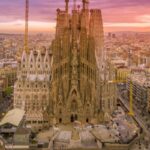 Mesmerizing Barcelona Hotel with Spectacular Sagrada Familia Views
Mesmerizing Barcelona Hotel with Spectacular Sagrada Familia Views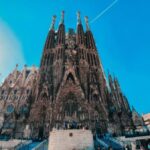 Awe-Inspiring Sagrada Familia Temple in Barcelona: A Must-Visit Attraction
Awe-Inspiring Sagrada Familia Temple in Barcelona: A Must-Visit AttractionIf you want to know other articles similar to Sagrada Familia: A Must-Visit Landmark in Barcelona you can visit the category WHERE YOU CAN GO.
Leave a Reply

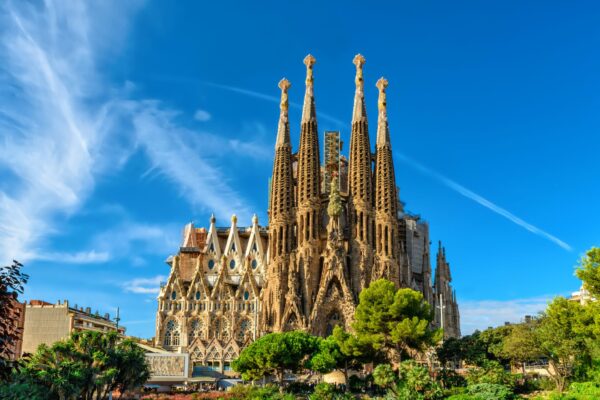
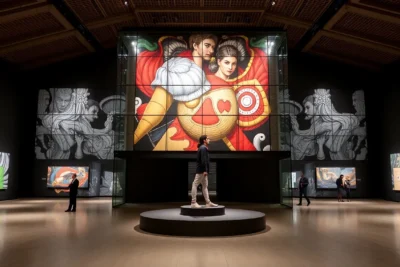
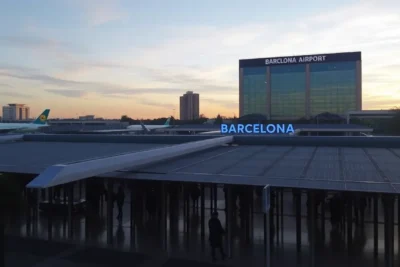

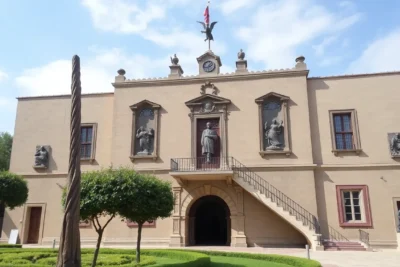

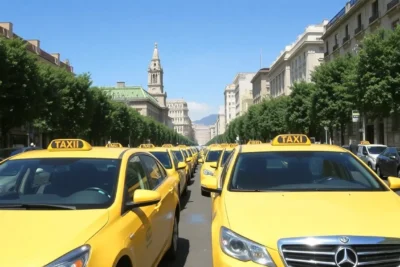
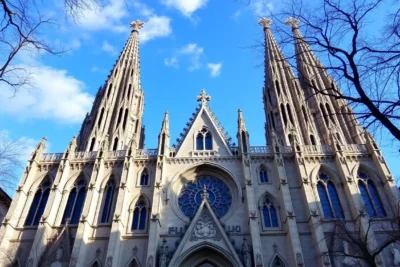

Read more!